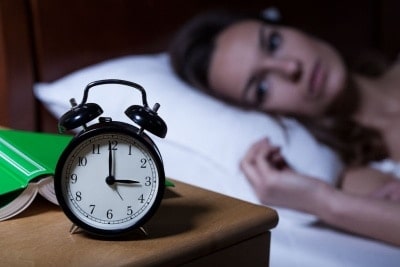Sleep & Sound Therapy
 Dr Tomatis believes that if we receive sufficient stimulation for the brain, the need for sleep is reduced. Studies have shown that deep sleep, medically termed “hypersomnia”, is the most essential type of sleep for our well being. Dreaming sleep or REM (Rapid Eye Movement) is a lighter sleep and with Sound Therapy it may be reduced in length without ill effects. The purpose of sleep is to replenish the brain’s energy. If the brain receives adequate stimulation from sound then the hours of sleep can be reduced.
Dr Tomatis believes that if we receive sufficient stimulation for the brain, the need for sleep is reduced. Studies have shown that deep sleep, medically termed “hypersomnia”, is the most essential type of sleep for our well being. Dreaming sleep or REM (Rapid Eye Movement) is a lighter sleep and with Sound Therapy it may be reduced in length without ill effects. The purpose of sleep is to replenish the brain’s energy. If the brain receives adequate stimulation from sound then the hours of sleep can be reduced.
How Sound Therapy helps
Sound Therapy encourages re-education of the ear to receive very high frequency sounds, between 8,000 and 16,000 Hz. Most of us have closed off to some extent to these sounds because of stress and long term exposure to damaging, low frequency noise from machines. As the middle ear muscles are rehabilitated by Sound Therapy, high frequencies can once again reach the inner ear. The high sounds aim to stimulate the brain and improve the functioning of the whole nervous system. Stress reduction enhances the body’s ability to replenish itself with sleep.
Through gaining deeper sleep, many listeners find that they need less sleep and can reduce their requirements by two or three hours per night. Dreams are often changed, nightmares subside, and clear positive dreams are recalled.
Insomnia
Some insomniacs have experienced an immediate and dramatic improvement in their sleep. Insomnia is caused by excessive cortical excitation that cannot be stopped. Though Sound Therapy aims to re-charge the brain for activity during the day, it also has a calming effect which enables the listener to slip easily and quickly into sleep. While the brain and the nervous system are stimulated by the sound, an active serenity will be experienced, which also allows for deep rest. Sleeplessness due to anxiety may also be resolved. The opening of the ear to high frequency sounds re-creates the pre-birth experience and can facilitate the resolution of early emotional anxieties.
Snoring and sleep apnoea occur if the pharynx, or throat has become soft and lost its muscular tone. These tissues may vibrate as the air passes through. Sound Therapy assists to tone the muscles in this area as well as normalizing the autonomic nervous system. It is thought this is why it has been found to reduce both snoring and sleep apnoea.
How to listen
Some people benefit from listening to Sound Therapy as they go to sleep and may listen either for the first 90 minutes or all night. Others will find that listening during the day is more appropriate to fit in with their sleeping and waking routine. Each person needs to develop a listening routine that suits their needs and is appropriate to their individual response.
COMMENTS FROM SOUND THERAPY LISTENERS
- “I now wake earlier with less tossing and turning, and my dreams are less scary’ ~ T.H. ROBILLARD
- “My sleep is markedly improved. I now have deep, restful sleep and wake without any hangover of drowsiness” ~ MRS P. CAMPDEN
- “Probably the most spectacular result was my sleeping patterns. After about a month on the therapy I started to sleep very soundly” ~ DR VERA SAURAN
- “I used to take hours to get to sleep. Now ten minutes. My husband is now doing the therapy and for starters has stopped snoring” ~ HELEN SCHATZLEY
For more information on the Sound Therapy please refer to the book Sound Therapy: Music to Recharge your Brain by Patricia and Rafaele

